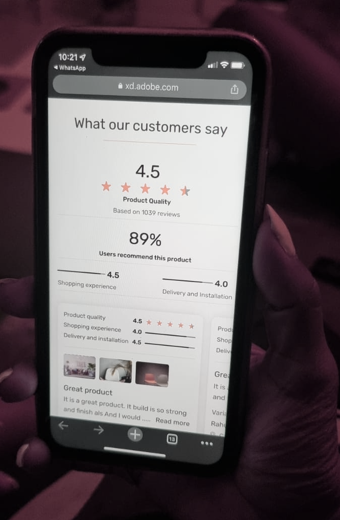With technology and changing trends the need for customer engagement and satisfaction is asking designers to take a deeper plunge in behavioural and spending patterns of customers. The TAPE concept is one such that to a larger extent goes skin deep and aids in building solutions that are sustainably engaging.
T: Trust
A: Attachment
P: Persuasion
E: Emotion
Trust is an important parameter that is synonymous to business. Having rooted trust means a client is aligned on a repetitive stream of giving business. When we speak of the design forum, articulating trust in design might seem very subjective issue and to be presented in design form is the skill a customer might enjoy as a good interface.
What is your design doing to convey trust?
Building credibility through your designs means making trust as the apparent output. While designing trust as an attribute, a good design takes into consideration the following parameters:
- Secured domain name and link
- Good content that is free of plagiarism
- Quality of design
- Photos that relate to your audience
- Authentic Information and backlinks
- Subtle call to action
- Genuine customer reviews
- Physical address of the business

Trust is not built up in one visit. But, in creating trust the different parameters that a design can avoid are:
Trust is the highest bid a designer would want to achieve through design. Trust is the psychological human tendency that ranks topmost in the audience conversion criteria.

Attachment is the longing a design creates. Often a product is so enthralling that it engages its audience with the comfort, aesthetics, convenience, processing, and reach.
To be able to capitalise on attachment in turn depends on the design parameters - trust, persuasion, and emotions. Together, they are able to create an enduring effect on the audience building the necessary attachment.

Think of the apps, portals or content that hooks you on, engages you to come back and stay put. The integral parameters that would define this kind of brand loyalty are:

Anticipating Needs:
A good design will anticipate audience needs and will fulfil it keeping them engaged and coming back.
Customised offerings:
Researching and finding customer needs is the core of every design as the context is to be able to relate and deliver. Out of context content and design will be turnoffs for your audience. Client based, goal based, need based smaller surveys will be able to deliver specific information that would help you deliver suggestion, recommendations, information, and subtle persuasion.
Immersive experiences:
Immersive does not mean momentary experience. Immersive means building an experience that is long lasting and often triggers comebacks. What better immersive experience than our e-commerce websites that provides an invigorating and captivating experiences. The designs, offers, aesthetics, all act as memory hooks in increasing customer attachment.
Persuasion only comes after Trust and Attachment are established, and to fuel Persuasion further is Emotion. Audience come with a set of expectations when on a site and to be able to leverage that expectation to conversion is persuasion.
How best can a design enhance persuasion?
Studies say, listing facts help persuade:
- Facts can be comparative studies
- Facts can be timely updates that is subtle persuasion
- Facts can be genuine information marked by reference source
- Sharing client experiences and feedback helps persuade
- Nothing can be more effective than genuine client feedback and testimonials
- Rewards and offers can be persuasive

The lure of rewards and offers is ever tempting to persuade. Sometimes genuine offers too might arouse scepticism. But keeping the trust parameter in check can drive persuasion.

Emotion is again a very subjective term and to be able to hook customers with this attribute is a going layer beneath their façade to understand what drives them towards a product or service.
While the crux of the matter is making your design a memorable experience, to engage and remember, what isn’t visible is the triggers that regulate emotions.

We operate instinctively to fear and opportunities and this is a critical element that design can adopt. Fear can be articulated as loss, temporary or permanent and the fact that are you ready to live with your loss? Designs use arousal, scarcity, status quo mismatch, wishful thinking to stimulate fear and loss.
Opportunities is a kingdom that can be explored in design. To be able to supplement plethora of opportunities also means there should be takers who are available. The classic mode to cash on this is the time driven critical offers, offering ease of design and decision making towards a definite call for action, simple language, spinning human stories etc.
Emotions is a broad chapter that encompasses the conscious and subconscious parameters that define innumerable yardsticks to explore and create engaging designs.

While Usability is about ease of learning, efficiency of use, eliminating errors, creating memory hooks, the TAPE concept goes far beyond in exploring the human requirement in building usability.
- TAPE is not just developing customers but engaging users
- Tape is not just performance but creating experiences
- TAPE is not just design but a user journey
TAPE is a vast arena and incorporating it in your design needs an in-depth study of various parameters that could refine and define the user experiences to a new pedestal.
© 2024 by Onyx UX Design Studio | All Rights Reserved